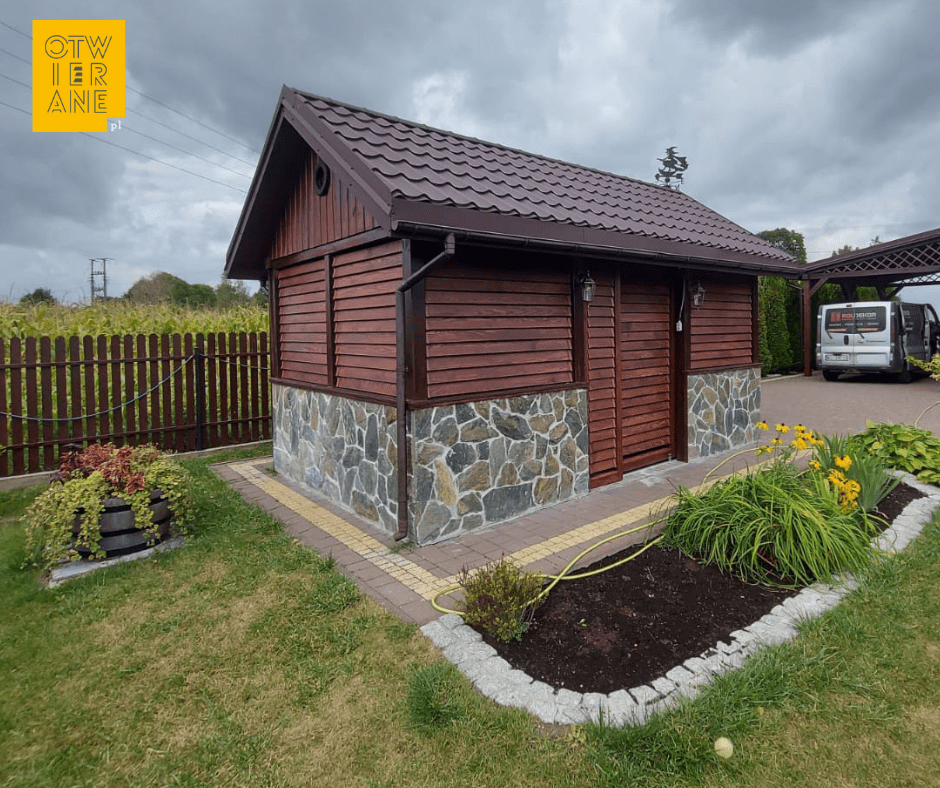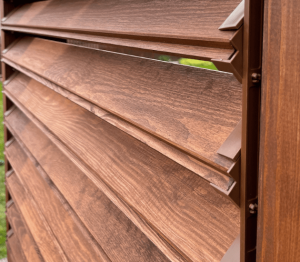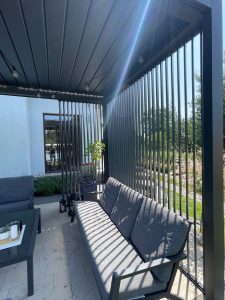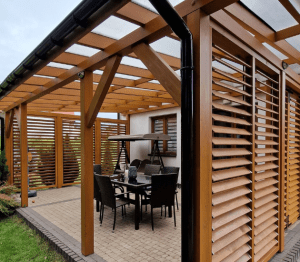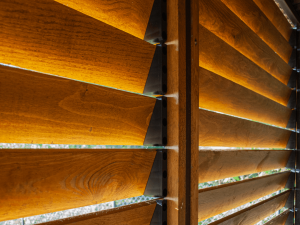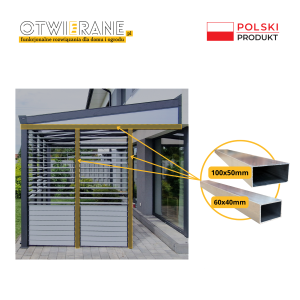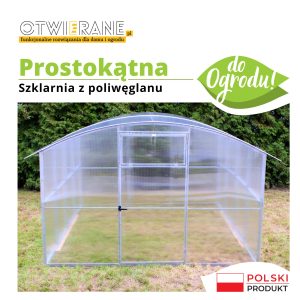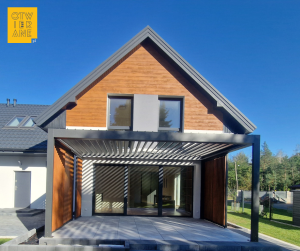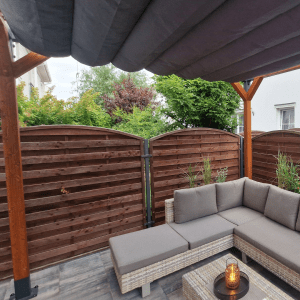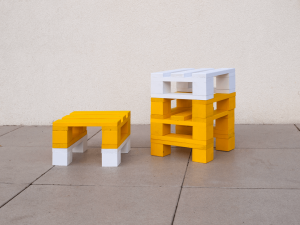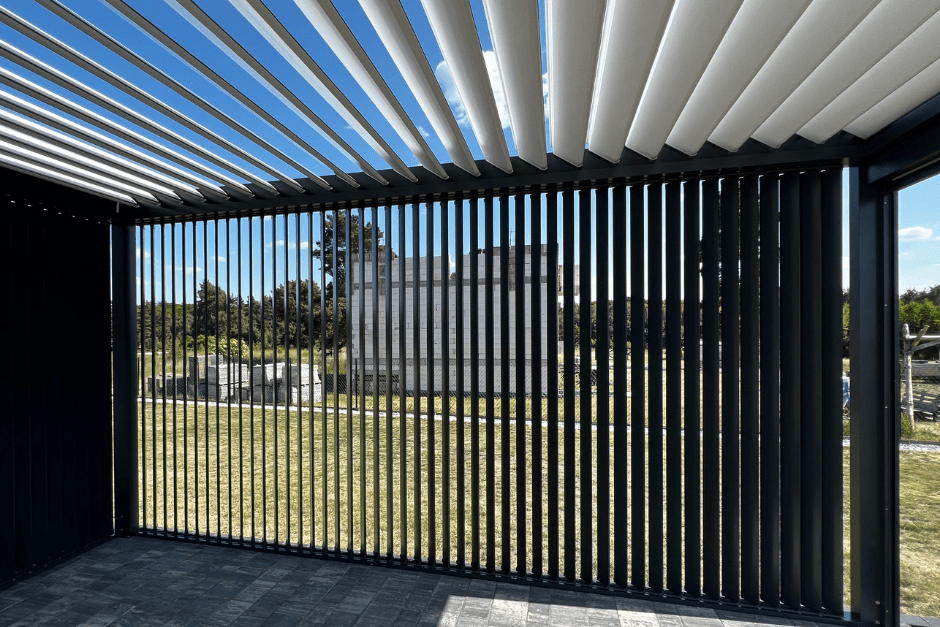
Which patio roof to choose? 6 ideas for a roof over your terrace.
If you are considering roofing your terracethen you are certainly wondering which one. We would be happy to help you decide which patio canopy to choose.
In our country, even the patio season is not always in full swing, allowing us to enjoy the outdoors. The strong sun and wind make it difficult to spend a relaxing weekend in a terrace chair. On top of that, sudden rain can spoil many a family garden party. That's why it's definitely worth investing in a terrace roofing.
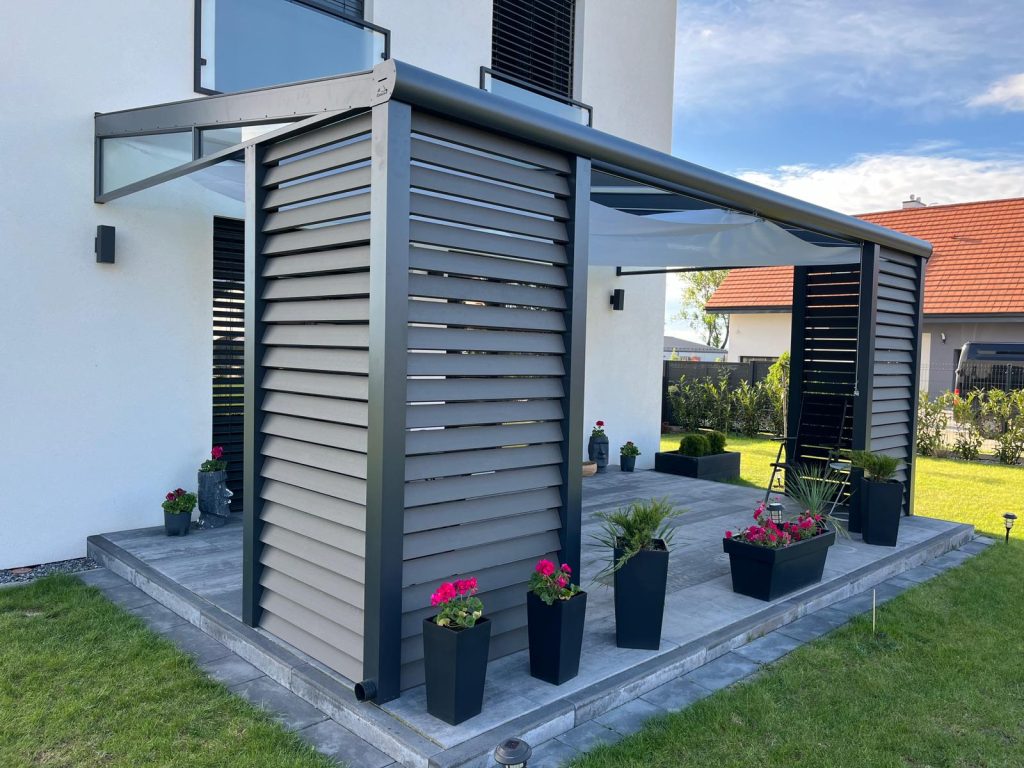
What for a terrace canopy?
You have several different types of patio roofing to choose from on the market. They can be full, or only partial. You can opt for only light shading of the terrace or for a complete permanent covering that effectively shields the terrace from rainfall as well. The choice is up to you. The choice depends on the size of your terrace and the planned functionality. Certainly, the price of the material and its durability are also important factors. And also the aesthetic effect you want to achieve. Here are some examples of different terrace covering options:
- Cellular polycarbonate: a lightweight, fairly durable material that can be transparent or translucent. It shields, but allows light to pass through. It is weather resistant, requires no constant care other than cleaning and is not subject to corrosion. It is a popular choice because of the rigidity provided by its internal chambers. The installation of a canopy using it is relatively quick and does not require the preparation of an extremely heavy supporting structure.
To keep it in service for years, it is worth installing it using dedicated seals, profiles and vapour-permeable strips selected according to the thickness of the material you decide on. Maintenance means periodic cleaning of the surface with mild detergents and soft tools. - PVC: coated tarpaulin fabric can be used successfully as a year-round canopy. It is cheap, protects the terrace from precipitation and is quite resistant to mechanical damage and temperature changes.
The disadvantage of PVC is that it is not very aesthetically pleasing and its durability under UV radiation and strong winds also leaves much to be desired. It is well suited for covering a small gazebo or carport.
A great deal depends on its correct installation, tension and stretch, and the finishing of its edges - eyeleting and welding. It is also advisable to clean it of any pollen and sediment that accumulates on its surface, and to periodically improve the tension of a roofing made this way. - Sheetaffordable and durable. Available in various colours and embossed forms. It is suitable for durable, long-lasting roofing. Its disadvantage is that it heats up quickly and the sound of rain hitting the roof is multiplied during rainfall. It requires a more elaborate supporting structure and the necessary flashings on its side and leading edges. It is advisable to have it installed by a specialised team with the appropriate roofing tools. It is wise to choose proven national and international brands offering multi-coated sheets with long warranties.
During installation, special care must be taken not to scratch the surface with swarf or tools, which could lead to future corrosion. To make the metal roofing durable, suitable sheet metal screws with gaskets are required, which are selected by the manufacturers to match the colour of the sheets. Well laid sheet metal requires practically no maintenance, with the exception of removing snow or large amounts of autumn leaves. - Glass: perfectly suited for an exceptionally elegant and modern roof covering. It allows light to pass through. However, it is not very resistant to damage and requires frequent cleaning to maintain its transparency. It will fit perfectly into modernist buildings and spacious orangery-like terrace spaces.
A glass-covered roof will not protect well against the sun and heat unless you opt for smoked glass or glass with appropriate coatings. Because of its considerable weight, it requires not only a sturdy frame but also an extremely even one - to avoid stresses that can cause breakage in extreme situations.
The most spectacular are the large, smooth glazings - but because of the weight of such panels and their considerable cost, they require installation only by teams with extensive experience and the appropriate tooling to manoeuvre such elements. It is worth investing in good quality gaskets and rubber profiles; these will ensure vibration damping, air-tightness and, finally, the greatest asset of glass - good sound attenuation. - Roofing membrane: often confused with tarpaulin fabrics for roofing. A roofing membrane is a so-called pre-covering membrane. It is one of the insulating layers that are used in the construction of a roof. It is not suitable for stand-alone roofing, even less so for long-term roofing. Its special structure allows water vapour to escape from the attic, and it is impervious to condensation under thin-coatings.
It is particularly recommended for sheet metal roofing. It is available in many weights and resistance classes. Despite its many advantages, it cannot be considered for permanent roofing. Wind, freezing rain and sunlight quickly degrade its structure and it loses its protective properties. - Bitumen roofing tile: is lightweight and robust. It does not require a heavy supporting structure and is resistant to temperature changes. Very good for roofing small gazebos and terraces. It is available in narrow strips that are relatively easy to install yourself.
Unlike other types of roofing, it requires a flat even substrate. This can be an OSB substructure, level boarding or pre-applied layers of felt underlay.
Bitumen roofing tile can come in a variety of cut shapes and colours - from a palette of reds to greens. It tolerates the varying climates of our latitudes quite well. However, it must be remembered that if it is exposed to prolonged moisture (e.g. northern exposure, proximity to the forest line) or strong winds, it will lose its covering properties over time and will need to be replaced more quickly than other materials.
In order for it to serve us for as long as possible, it is sensible to use high-grade adhesives recommended by manufacturers for its installation.
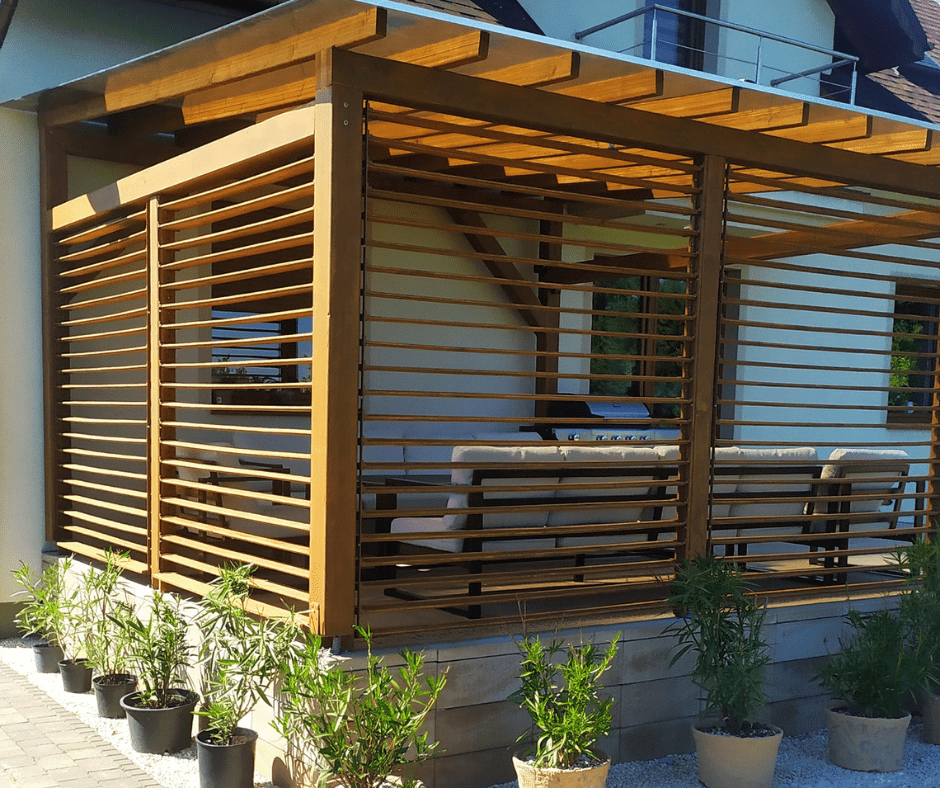
What to consider when choosing a type of terrace canopy:
Choosing the type of canopy is not only an aesthetic issue. In fact, you can usually find several different satisfactory solutions for each style of terrace. So what else is worth considering?
- Construction and type of superstructure requiredon which you plan to make a canopy.
- Dimensions i area canopies.
- Shape, slope formation and side edges canopies.
- Main functions of the canopy: shelter from sun, wind and rain, shelter from falling leaves and cones, support for climbing plants, solarisation of the terrace.
- Durability of the material
- Budget and planned return on investment over time.
Polycarbonate terrace roofing
Polycarbonate is great for covering a terrace if you want the roof to let more light through. This is a good solution if your terrace is on the north side or under trees and you don't want additional shade. Glass will not be as good an option here, as branches or cones falling in strong winds can damage the roof.
Polycarbonate can have varying degrees of transparency, is durable and achieves the effect of glass without its drawbacks. It does not need a heavy support structure and is not complicated to install. It will be suitable for a variety of terrace styles. It will work best with modern buildings. The most durable, but at the same time the most expensive, panels are particularly thick with many internal ribs and chambers.
Terrace canopy - Roman blind
The Roman blind will make a very elegant and striking terrace cover. It is made of high-quality material and can come in various colours. It shades the terrace from the sun and light rain.
If you don't need the roof permanently, but want the terrace to be shaded when you like, a roller blind will be the ideal solution. You can roll it up and down as needed. It is not a very expensive solution, it does not require a solid supporting structure, and it looks very striking and fulfils its function. The available widths of the roller blinds are a limitation, but you can successfully compose a rhythm of several blinds mounted in parallel next to each other.
Terrace canopy (made of boards)
Openwork plank roofing is obviously not a canopy that protects the terrace from heavy prolonged rain. It is, on the other hand, great for shade and allows for many aesthetic forms.
An openwork terrace covering can serve you as a base for climbing plants. For example, a beautiful vine or a flowering wisteria. A fabric can also be interwoven between the boards, a so-called sunshade sail. With their different forms, colours and types, beautiful effects can be achieved. Plus, of course, the protection of the terrace from the sun.
The interwoven fabric can create different patterns. It will look great and evoke coastal and tropical climates. Sounds good, doesn't it?

Patio roofing with movable blinds
The terrace roof can also be shielded by movable external blinds. Blinds can be wooden or aluminium. The wooden ones will look perfectly modern and shade the terrace when you need it. If you also want to protect the terrace from heavy rainfall, movable aluminium blinds will work better in this role. Properly prepared, they will drain water well even from heavy rainfall. Besides, both types of blinds will be durable, adding a modern designer touch to your terrace. And, of course, you can open and close them as required.
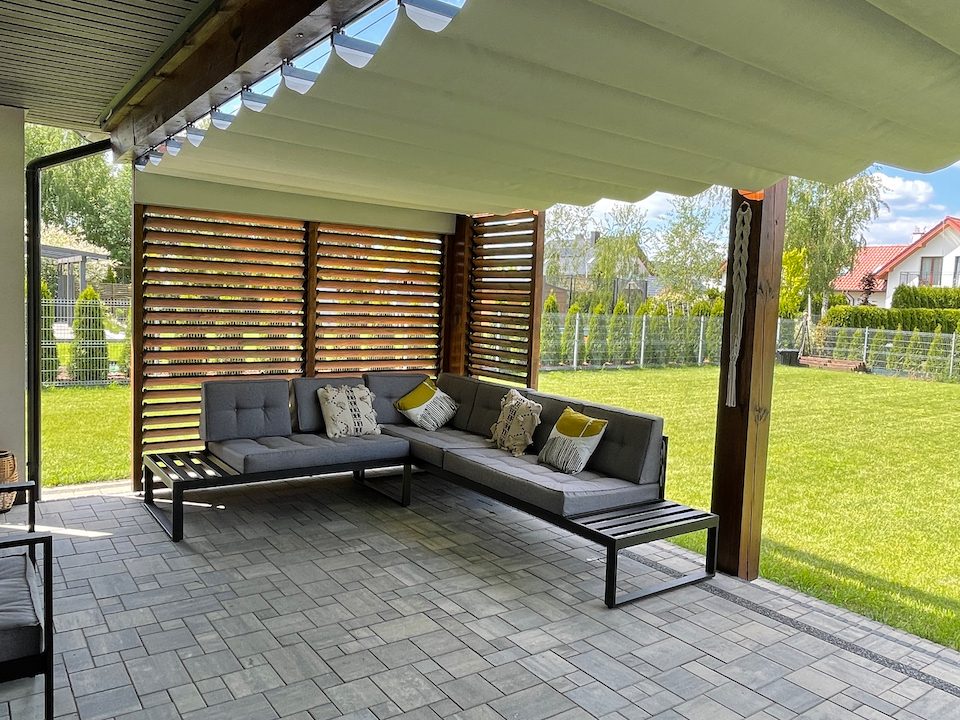
Terrace roofing - do you need a permit?
According to the new building law, you do not need a permit to roof a terrace.
If you are carrying out a major work which is de facto the remodelling of an entire building and the creation of new premises, then such an action only needs to be notified. If you treat the roofing of the terrace purely as a renovation, not even a notification is required.

